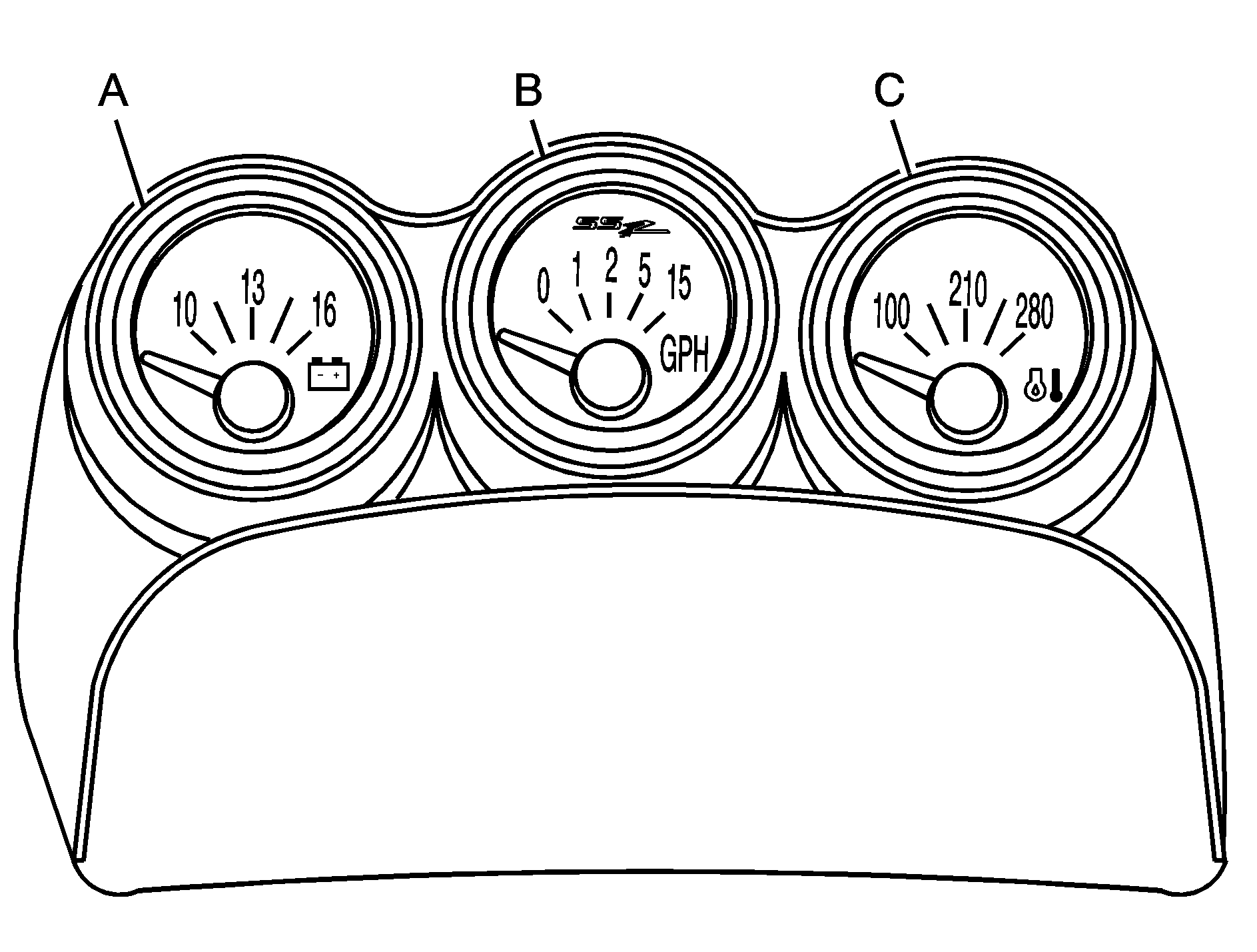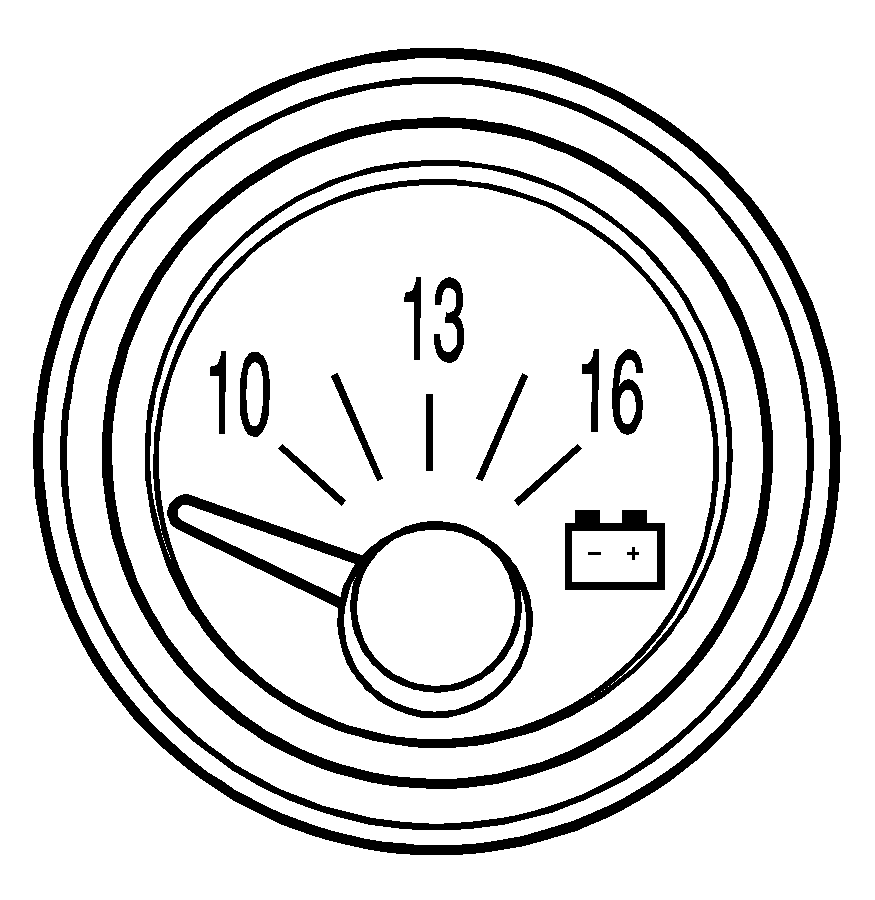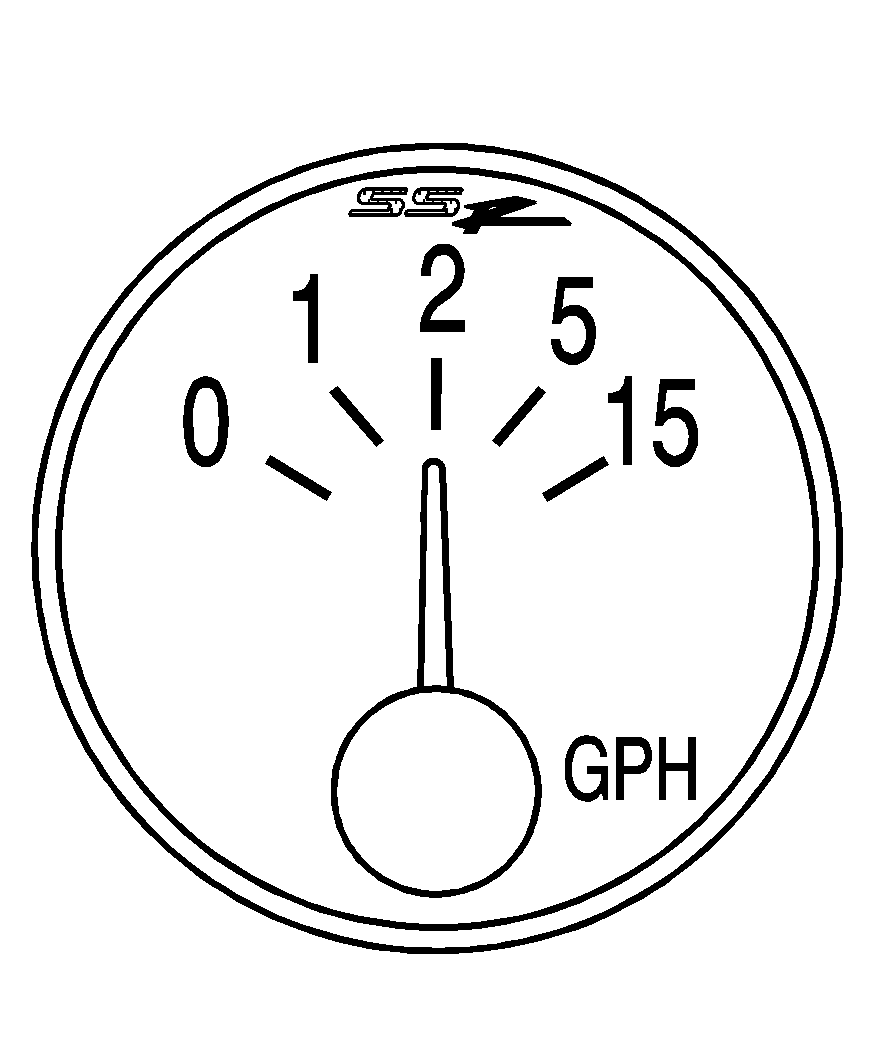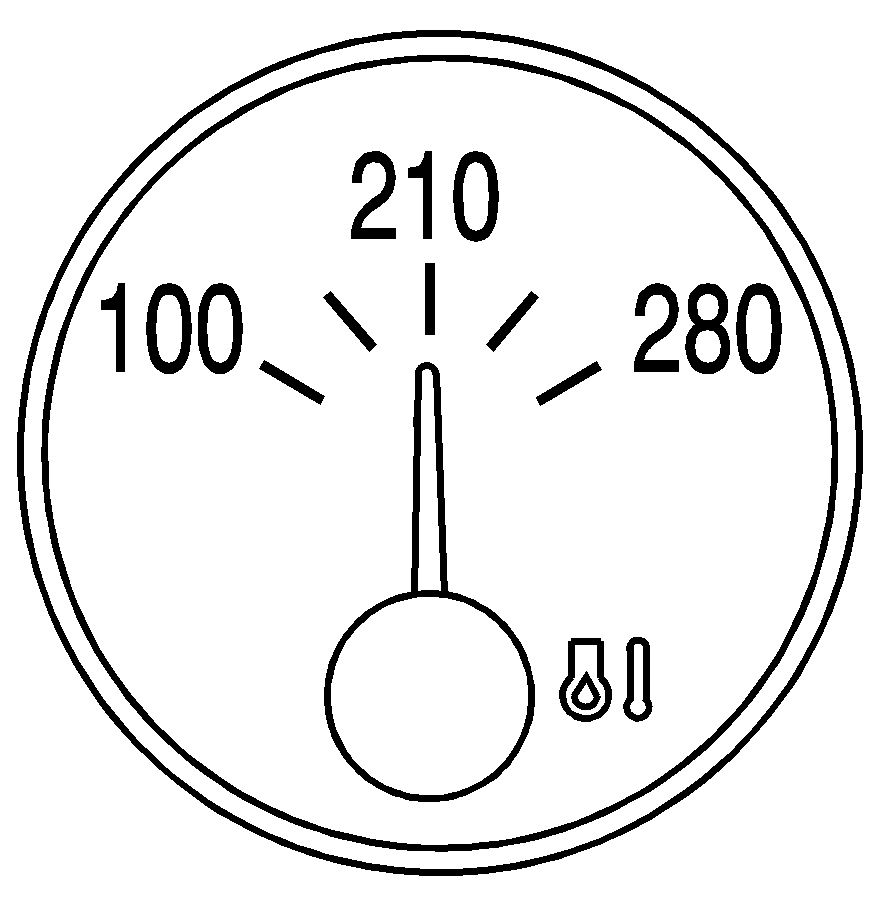
Voltmeter Gage
Instantaneous Fuel Consumption Gage
Transmission Temperature Gage
Your vehicle may have an auxiliary gage package located at the front of the center console.
Voltmeter Gage

This gage (A) is located on the left side of the gage package.
When your engine is not running, but the ignition is in RUN, this gage shows your battery's state of charge in DC volts.
When the ignition is on and the engine is running, the gage shows the condition of the charging system. Readings between the low and high warning zones indicate the normal operating range.
Readings in the low warning zone may occur when a large number of electrical accessories are operating in the vehicle and the engine is left at an idle for an extended period. This condition is normal since the charging system is not able to provide full power at engine idle. As engine speeds are increased, this condition should correct itself as higher engine speeds allow the charging system to create maximum power.
You can only drive for a short time with the reading in either warning zone. If you must drive while the gage is in the warning zone, turn off all unnecessary accessories.
Readings in either warning zone indicate a possible problem in the electrical system. Have the vehicle serviced as soon as possible.
Instantaneous Fuel Consumption Gage

This gage (B) is located in the center of the gage package.
The instantaneous fuel consumption gage shows the rate of fuel that is being used in gallons per hour (gph).
Transmission Temperature Gage

This gage (C) is located on the right side of the gage package.
When your ignition is on, the gage shows the temperature of the transmission fluid. The normal operating range is from 100°F (38°C) to about 265°F (130°C).
At approximately 265°F (130°C), the transmission will enter a transmission protection mode. When the transmission enters the protection mode, you may notice a change in the transmission shifting patterns. The transmission will return to normal shifting patterns when the transmission fluid temperature falls below 260°F (127°C).
Pull the vehicle off the roadway when it is safe to do so. Set the parking brake, place the transmission in PARK (P) and allow the engine to idle until the transmission temperature falls below 260°F (127°C). If the transmission continues to operate above 260°F (127°C), see your dealer for service or contact GM Roadside Assistance. See Roadside Assistance Program .
Notice: If you drive your vehicle with the transmission temperature gage above normal operating range, you can damage the transmission. This could lead to costly repairs that would not be covered by your warranty. Do not drive your vehicle while the transmission temperature gage reading is above normal. See your dealer for service.
The following situations can cause the transmission to operate at higher temperatures:
| • | Towing a trailer |
| • | Hot outside air temperatures |
| • | Hauling a large or heavy load |
| • | Low transmission fluid level |
| • | High transmission fluid level |
| • | Engine overheating |
A temporary solution to hotter transmission operating temperatures may be to let the transmission cool down. If the transmission is operated at higher temperatures on a frequent basis, see Scheduled Maintenance for the proper transmission maintenance intervals.
